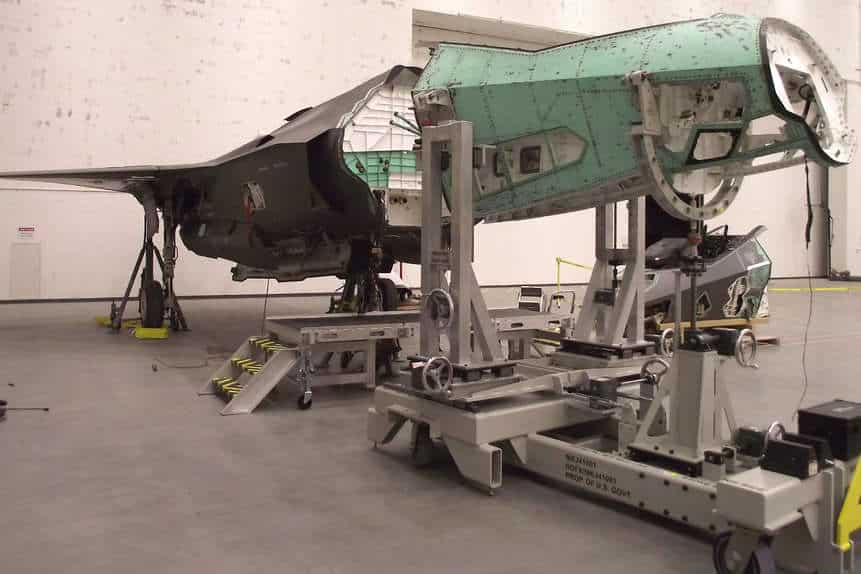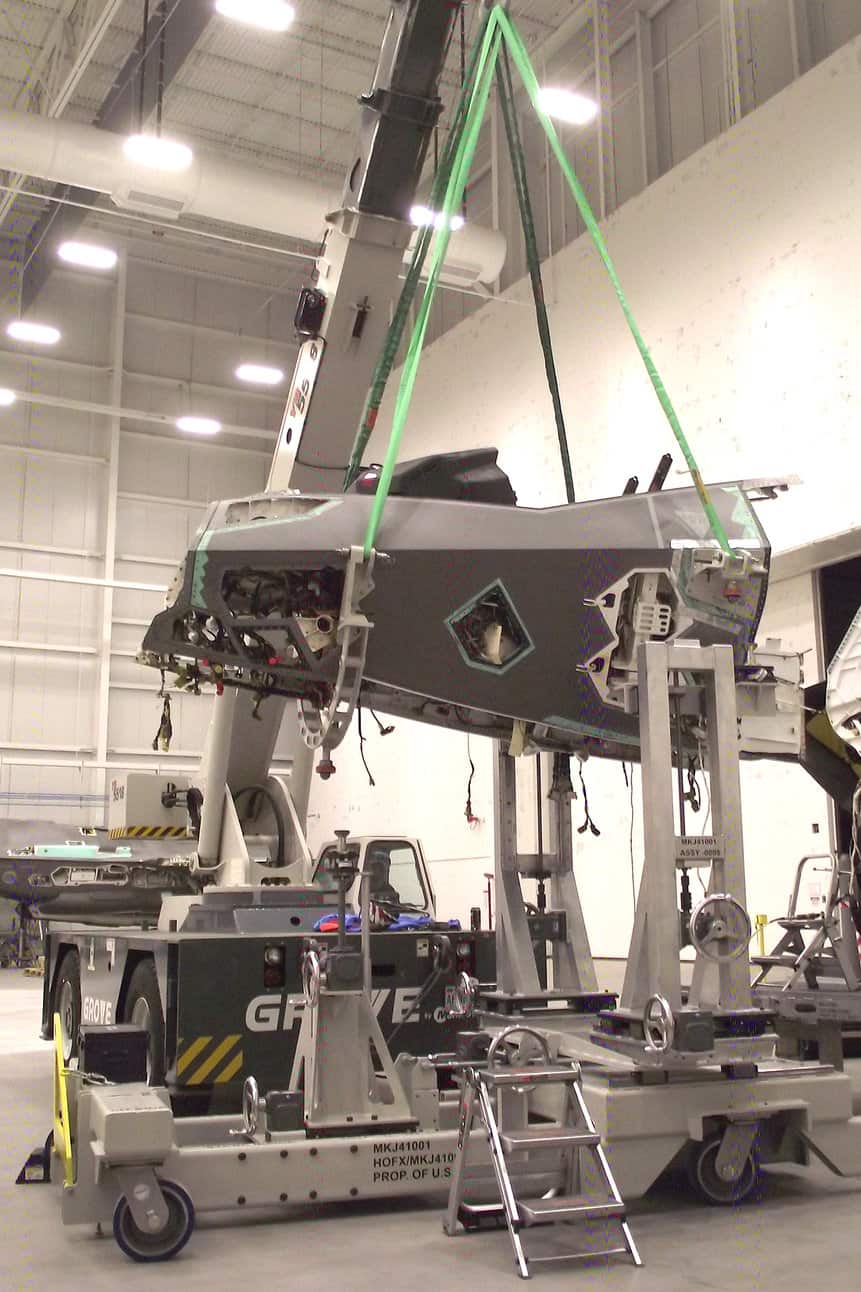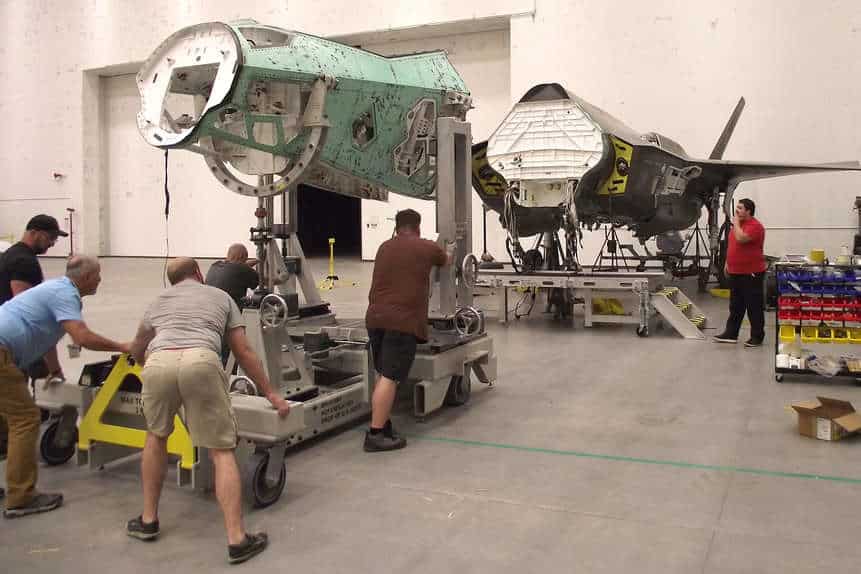Two F-35 Lightning II stealth fighters they will be able to fly differently again. The aircraft involved in accidents almost 10 years ago will be transformed into one, a kind of Frankenstein jet, fully operational.
The arduous task is being carried out by a group of technicians and mechanics specializing in the aircraft, with special tooling and support from Hill Air Force Base, the F-35 Joint Program Office (JPO) and the fighter's manufacturer, Lockheed Martin. The project is at an advanced stage, with delivery scheduled for 2025.
According to the US Air Force (USAF), the military analyzed the feasibility of the task and decided to bring the AF-27 and AF-211 registration aircraft back into flying condition.
The AF-211 lost its front landing gear in a June 2020 incident, while the AF-27 suffered extensive fuselage damage from an engine fire. Thus, the nose of the burned jet will be fitted to the fuselage of the F-35 that lost its landing gear. “This is a first for the F-35 program and a very interesting project,” said Dan Santos, JPO heavy maintenance manager.
The “mission” is part of an effort by JPO, which in recent years has sought new opportunities to repurpose usable parts and systems from damaged F-35 aircraft for continued use and benefit to stealth fighter maintenance and operations.

Building on experience gained from several recent salvaged aircraft repurposing projects – including the installation of the first F-35 maintainer training center using sections of salvaged aircraft, as well as the partial restoration of a salvaged F-35 fuselage to use as an ABDR Trainer – JPO is now taking it a step further.
The firm took advantage of this newly created network of qualified professionals, resources and facilities, all located on the Hill, to carry out the “Franken-bird” project. The Ogden Air Logistics Complex played a significant role in providing hangar space and heavy equipment for the project.
“It takes a team for this type of venture to be successful”, said Santos. “I am very impressed with the collaborative efforts of the various agencies at Hill Air Force Base working together to make this happen.”
Keith White, a 388th Fighter Wing officer, said that although the jet is owned by the unit, it is still part of an F-35 JPO contract, and Lockheed is the company responsible for the work.
“Work began on the feasibility of this project in January 2020 when JPO approached us because we had already completed major damage restoration projects for the F-22,” said Scott Taylor, chief mechanical engineer at Lockheed Martin. .
However, unlike previous projects, Taylor said this initiative stands out because of its meticulous documentation, which will be used to establish standardized F-35 procedures that can be seamlessly integrated into routine operations in the future.
“All sections of the aircraft can be decoupled and recoupled theoretically, but this has never been done before”Taylor said. “This is the first F-35 Frankenstein to date. This is history.”

To complete the work on the Hill site, entirely new and unique tools, fixtures and specialist equipment were designed and built, specifically adapted for mobility. These have potential future uses abroad.
“We designed versatile tools that fit neatly into a Conex box, making them transportable to multiple locations, including forward operation areas,” Taylor said.
These new mobile fixtures achieve the same results as large, automated, stationary manufacturing jigs at the F-35 factory in Fort Worth, Texas, but with a new approach. The additional capability will benefit the entire F-35 program.
“The F-35 program is still young compared to all legacy airframes”, said Dave Myers, chief engineer of the F-35 support team.
“This project will not only return a combat asset to the warfighter, but will also open the door to repairing future crashed aircraft using the tools, equipment, techniques, and knowledge that has been developed,” Santos said.
With information DVIDS
Do you want to receive our news firsthand? Click Here and be part of our Group on Whatsapp or Telegram.


